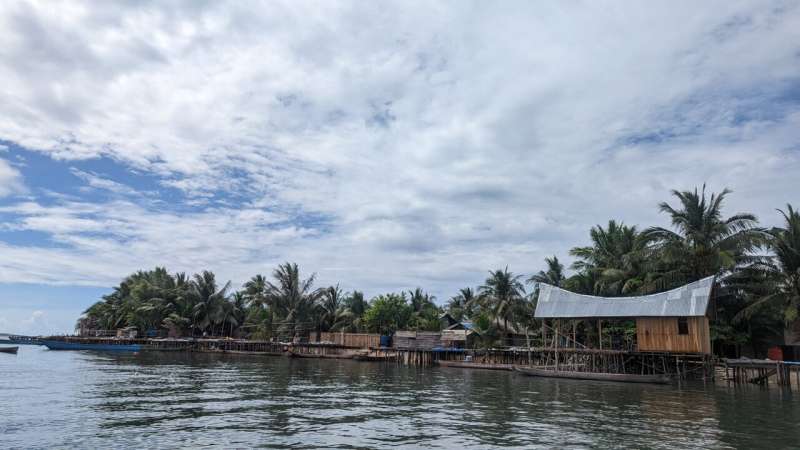This article has been reviewed according to Science X's editorial process and policies. Editors have highlighted the following attributes while ensuring the content's credibility:
fact-checked
peer-reviewed publication
trusted source
proofread
Adding to the story of ancient human migration: Evidence of early maritime activities in Indonesia's Tanimbar islands

New evidence of human occupation in southeast Indonesia dating back 42,000 years offers fresh clues about the route taken by some of the first humans to arrive in our region, according to a study from The Australian National University (ANU). The research has been published in Quaternary Science Reviews.
Lead author and ANU Ph.D. candidate Hendri Kaharudin said the location of the discovery—at Elivavan on Indonesia's Tanimbar islands—makes it especially significant.
"Tanimbar is located just off the 'Sahul shelf,' which encompasses modern-day Australia, as well as New Guinea," he said.
"The question of how our early ancestors arrived there from Southeast Asia is one of the most captivating in prehistoric migration, mainly because of the vast distances covered and advanced seafaring skills that would have been required.
"There are two main routes that have been explored as possibilities since the mid-20th century—a northern path via islands like Sulawesi, and a southern track passing near Timor and the Tanimbar islands.
"This discovery marks one of the southern route's earliest known sites, making it a crucial piece of the puzzle."
According to the researchers, while there are still unanswered questions about Elivavan's first inhabitants, the risky nature of the sea crossings suggests the colonists had developed advanced maritime technology by around 42,000 years ago.
"They would have had to traverse bodies of water exceeding 100 kilometers in distance, regardless of their direction of travel," Mr. Kaharudin said.
"Along with tiny fragments of pottery we also found evidence of things like bones, shells and sea urchins that point to the island's role as a hub for early maritime activities.
"As more work is done in lesser-explored regions like the Tanimbar islands, I expect we'll uncover more about early human life and migration patterns."
Mr. Kaharudin said it's also clear the colonization of Sahul was not a single event but "a gradual process involving successive waves of seafaring populations."
"Coastal communities likely navigated shorelines, exploiting marine resources and establishing resilient settlements along their journey," he said.
"This island-hopping strategy facilitated cultural exchange and adaptation, shaping diverse societies across the land mass."
More information: Hendri A.F. Kaharudin et al, Islands on the edge: 42,000-year-old occupation of the Tanimbar islands and its implications for the Sunda-Sahul early human migration discourse, Quaternary Science Reviews (2024). DOI: 10.1016/j.quascirev.2024.108834
Journal information: Quaternary Science Reviews
Provided by The Australian National University




















